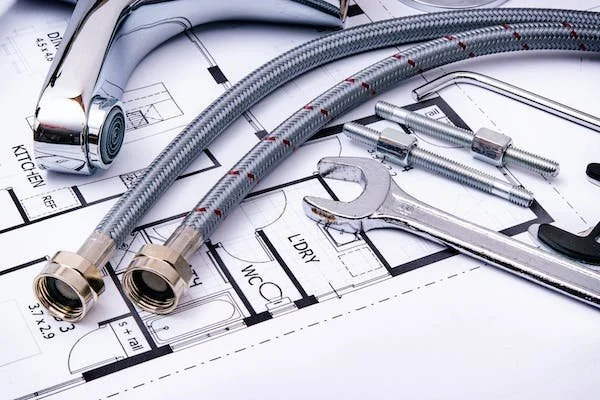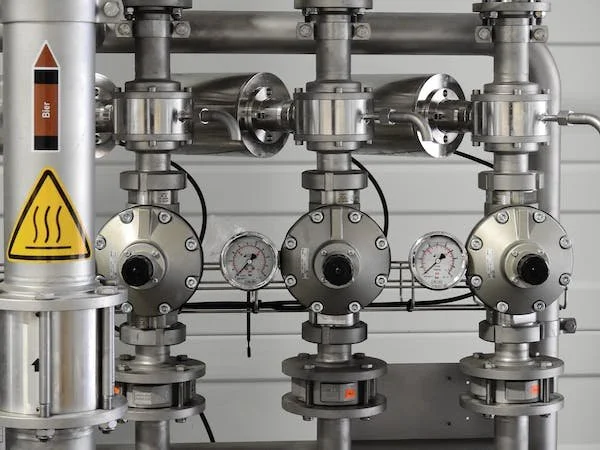Why a Well-Designed Kitchen Interior is Essential for Your Home
RH Business Marketing Solutions
Your kitchen is more than just a place to prepare meals; it's the heart of your home. A well-designed kitchen interior not only enhances the functionality of this space but also adds to the overall aesthetics and value of your home.
In this blog, we'll explore the importance of a well-designed kitchen and discuss ten key points that emphasize why investing in a thoughtfully designed kitchen interior is essential for your home.
Functionality and Efficiency
A well-designed kitchen optimizes every inch of space. Innovations like pull-out pantry shelves and deep drawers maximize storage capacity. Furthermore, advancements in kitchen appliances have led to more efficient and time-saving cooking processes. For instance, convection ovens cook food faster and more evenly, while induction cooktops offer precise temperature control, reducing the chances of overcooking or burning dishes.
Enhanced Safety
Modern kitchen design is all about safety. Induction cooktops, for instance, only heat when they detect compatible cookware, reducing the risk of burns. Additionally, innovations in kitchen ventilation systems ensure that cooking odors and smoke are quickly whisked away, maintaining a healthy indoor environment.
Aesthetic Appeal
Aesthetic appeal is often the first thing that comes to mind when considering a kitchen makeover. Innovations in kitchen design have brought us a plethora of materials and finishes to choose from, allowing homeowners to express their unique style. Quartz countertops, for example, mimic the elegance of natural stone but are more durable and require less maintenance. Smart lighting systems enable you to set the mood with just a tap on your smartphone, enhancing the overall ambiance of your kitchen.
Improved Organization
Kitchen organization can be a challenge, especially if you have a penchant for collecting kitchen gadgets and tools. However, a well-designed kitchen can help you tame the clutter. Innovations like pull-out spice racks and custom drawer dividers allow you to keep your cooking essentials neatly organized. Moreover, cabinet organizers like pull-out trash and recycling bins discreetly hide waste and help maintain a clean and organized kitchen.
Maximizing Space
Space optimization is crucial, especially in smaller kitchens. Innovations like corner cabinets with revolving trays make use of otherwise wasted space, while fold-down countertops can double as additional workspace or a breakfast bar. Wall-mounted magnetic knife holders not only keep your knives within easy reach but also free up precious counter space.
Increased Property Value
A well-designed kitchen isn't just about your immediate enjoyment; it's an investment in your home's future. A beautifully designed and functional kitchen can significantly boost your property's value. Potential buyers often prioritize updated kitchens when house hunting, making it one of the most attractive selling points of a home. So, your investment in a well-designed kitchen is likely to yield substantial returns when it's time to sell your property.
Sustainability
Sustainability is a concern for both homeowners and the planet. A well-designed kitchen can incorporate eco-friendly features and materials. LED lighting, for example, consumes significantly less energy than traditional incandescent bulbs. Water-saving faucets and dishwashers help reduce water consumption. Sustainable materials like bamboo or reclaimed wood for flooring and cabinets can contribute to a greener kitchen design.
Versatility
A versatile kitchen is essential for modern living. Innovations like multi-purpose islands with built-in sinks and additional seating can transform your kitchen into a central hub for various activities. Adjustable shelving and pull-out tables allow you to adapt your kitchen to suit different needs, whether it's hosting a family gathering, working from home, or simply enjoying a quiet meal.
Technological Integration
Technology has seamlessly integrated into kitchen design. Smart appliances, such as refrigerators with touchscreens and ovens with remote control, offer convenience and efficiency. Voice-activated assistants like Amazon's Alexa can help you with recipes, shopping lists, and timers, making your kitchen experience more streamlined and enjoyable. Furthermore, built-in charging stations ensure that your devices are always powered up and within reach.
Personalization and Comfort
Personalizing your kitchen is a delightful journey. From choosing cabinet finishes to selecting fixtures that match your style, a well-designed kitchen reflects your personality. Innovations like pull-out wine racks, custom cabinet inserts for pots and pans, and specialized storage solutions for baking sheets and trays ensure that your kitchen caters to your unique needs. Ergonomic considerations, such as counter heights and the arrangement of appliances, ensure that your kitchen is comfortable for you and your family to use.
Conclusion
A well-designed kitchen interior is not just a luxury; it's an investment in your daily life and the long-term value of your home. It enhances functionality, safety, and organization, all while adding aesthetic appeal and increasing your property's resale value. With the constant stream of innovations in kitchen design and technology, there's no limit to what you can achieve in creating a kitchen that suits your lifestyle and preferences.
















